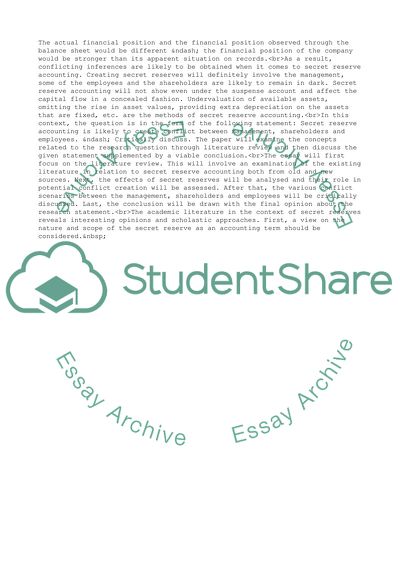Cite this document
(Secret Reserve Accounting to Create Conflict between Management, Research Paper - 1, n.d.)
Secret Reserve Accounting to Create Conflict between Management, Research Paper - 1. Retrieved from https://studentshare.org/management/1750200-secret-reserve-accounting-is-likely-to-create-conflict-between-management-shareholders-and-employees
Secret Reserve Accounting to Create Conflict between Management, Research Paper - 1. Retrieved from https://studentshare.org/management/1750200-secret-reserve-accounting-is-likely-to-create-conflict-between-management-shareholders-and-employees
(Secret Reserve Accounting to Create Conflict Between Management, Research Paper - 1)
Secret Reserve Accounting to Create Conflict Between Management, Research Paper - 1. https://studentshare.org/management/1750200-secret-reserve-accounting-is-likely-to-create-conflict-between-management-shareholders-and-employees.
Secret Reserve Accounting to Create Conflict Between Management, Research Paper - 1. https://studentshare.org/management/1750200-secret-reserve-accounting-is-likely-to-create-conflict-between-management-shareholders-and-employees.
“Secret Reserve Accounting to Create Conflict Between Management, Research Paper - 1”, n.d. https://studentshare.org/management/1750200-secret-reserve-accounting-is-likely-to-create-conflict-between-management-shareholders-and-employees.


